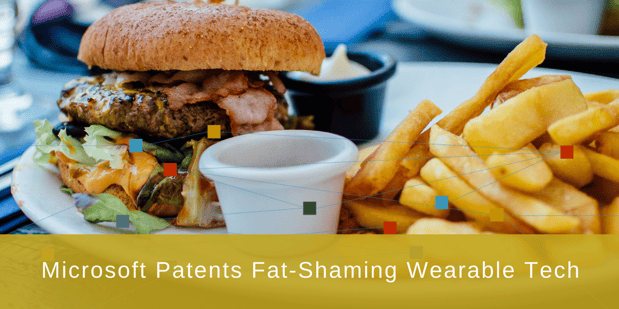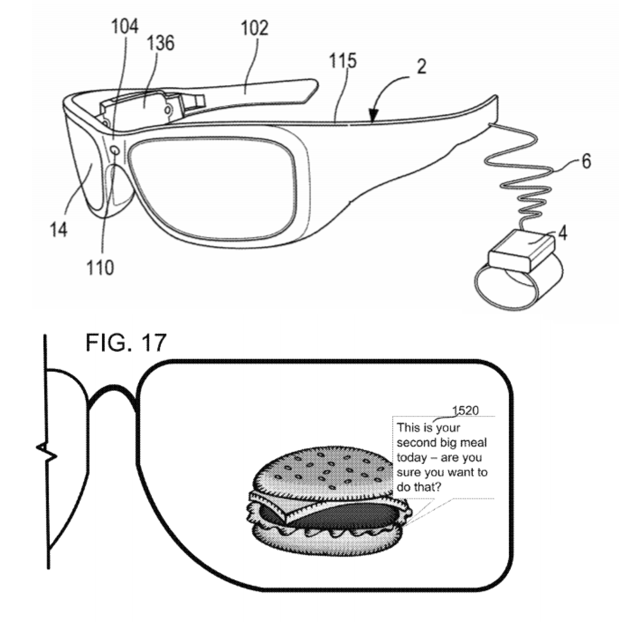 In a move that combines Back to the Future-style wearable tech and the faux-kindness of Mean Girls, Microsoft plans to bring us glasses that tell us all about the nutrition stats in the food we’re planning to eat.
In a move that combines Back to the Future-style wearable tech and the faux-kindness of Mean Girls, Microsoft plans to bring us glasses that tell us all about the nutrition stats in the food we’re planning to eat.
The image below from the patent information, which was granted on May 9 of this year, shows feedback presented on the inside of the lens. On the outside of the glasses, we see something that appears to be a speaker device, a camera, and a hidden processor—the brains of the whole operation.

The Big Idea
Of course, the intent behind the glasses is a good one. Slip on the wearable tech, take a look at the meal you’re about to consume, and learn all about the fat content, calorie count, and carbs and sugar you’re about to inhale. The glasses will share all the info on the inside of the lens, where only the wearer can see the shameful numbers. Which is a good thing, because we hazard a guess that most who make use of the glasses will choose to eat that side of French fries anyway.
The Finer Points
To be honest, it’s an amazing feat of technology that these glasses attempt. For one, the patent covers eye movement, so we know that someone who’s at a buffet, considering all the options, can still get the information they need about the food in question before the mashed potatoes and gravy make their way to the plate.
The glasses will also monitor temperature and motion, which could be used to provide suggestions for better health, such as lighter meals during hot months, and hearty meals when it’s cold outside.
One Big Potential Benefit
While the plan to monitor caloric intake seems a little fat-shame-ish, there are some specific benefits that the glasses of this type could someday offer consumers. If the glasses had the ability to determine calorie and fat counts, they also could (and should) also have the ability to detect certain ingredients, which could save the lives of those who have specific dietary needs. We see no evidence that this option is available now, as the information relayed by the glasses would be from the restaurant itself.
However, we like the direction this is heading, as it hints that someday we might have the ability to detect specific information about the food we’re about to consume.
Imagine you’re a diabetic who orders the sugar-free dessert option, but the server makes a mistake and brings over the cake with real sugar. Or, perhaps you have Celiac disease, but the server forgets to tell the chef that you need gluten-free crust on your pizza. With glasses that could provide that information, food-related emergencies could be a thing of the past.
We do honestly expect that users will ignore that suggestion not to eat the cheeseburger. We don’t need glasses to tell us we’re making bad food decisions. However, the life-saving opportunities that could come from the wearable tech Microsoft has patented makes this innovation something to be applauded.
We’ll be watching closely.
If you’d like to learn more about innovation and intellectual property in the wearable tech or even the food industry, give us a call. We can help you determine the white space that exists where innovation that truly helps solve consumers’ pain can occur.



